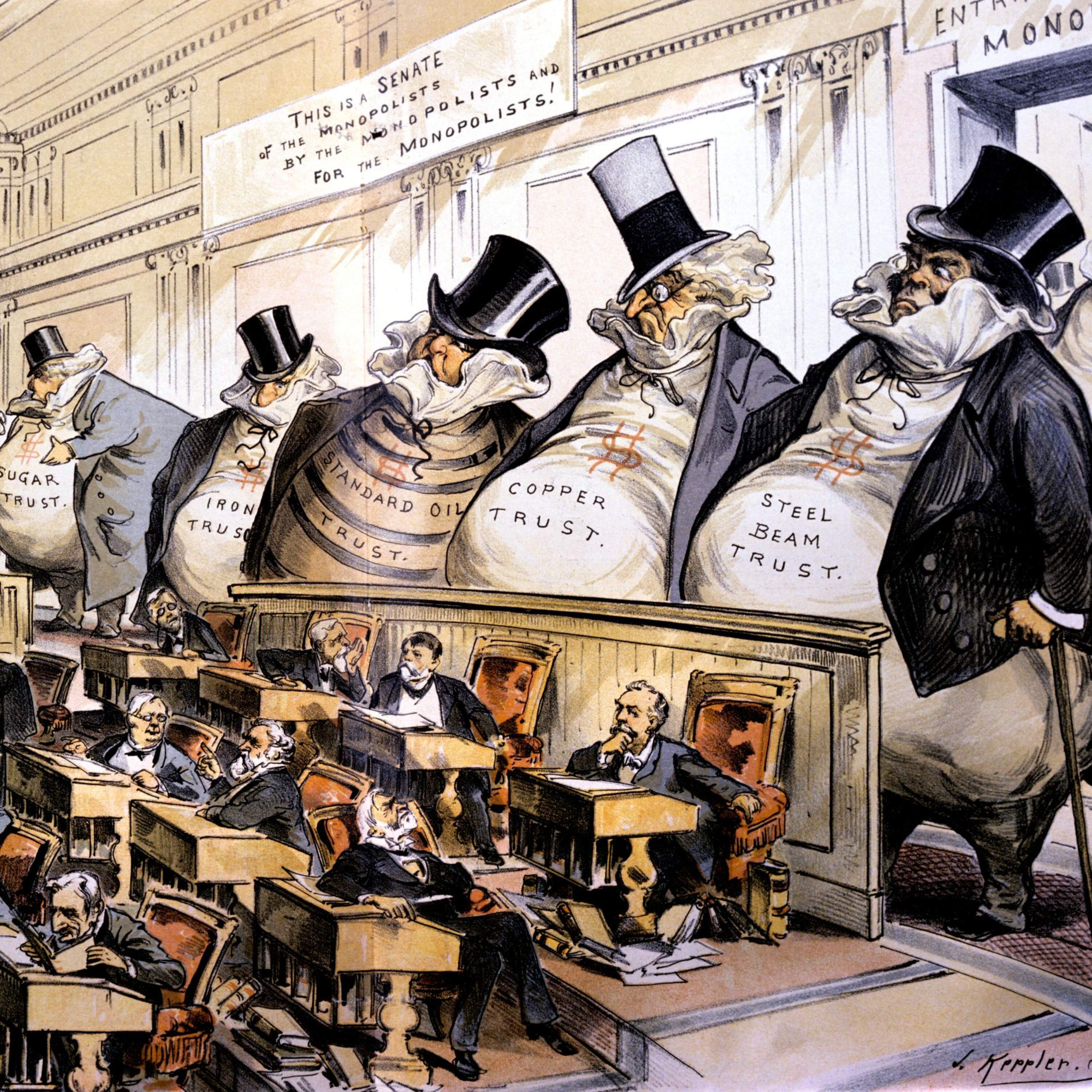Why are veterinarian bills getting so ruff on the wallet?
Related episodes:
The Vet Clinic Chow Down
What Do Private Equity Firms Actually Do?
For sponsor-free episodes of The Indicator from Planet Money, subscribe to Planet Money+ via Apple Podcasts or at plus.npr.org. Fact-checking by Sierra Juarez. Music by Drop Electric. Find us: TikTok, Instagram, Facebook, Newsletter.
Learn more about sponsor message choices: podcastchoices.com/adchoices
NPR Privacy Policy
Press play and read along
Transcript
Speaker 1 NPR.
Speaker 1
Paying for healthcare isn't just a problem for people. In the past few years, the cost of healthcare for pets has actually been surging.
For a point of comparison, get a load of this stat.
Speaker 1 According to the Consumer Price Index, which tracks the price of goods and services, overall prices in the economy are about 25% higher today than they were five years ago.
Speaker 1 But over that same period, the cost of veterinary services increased by about 41%.
Speaker 1
Yeah, that is a steep increase. And according to a recent Gallup survey, most pet owners say they have skipped necessary vet care because of the cost.
So what is going on here?
Speaker 1
This is the indicator for Planet Money. I'm Adrian Ma.
And I'm Darien Woods. Today on the show, what is behind the rising cost of care for our furry or feathered or scaly friends?
Speaker 1 And we have an economic theory that helps explain what's going on.
Speaker 2
This message comes from LinkedIn Ads. One of the hardest parts about B2B marketing is reaching the right audience.
That's why you need LinkedIn ads.
Speaker 2
You can target your buyers by job title, company, role, seniority, and skills. All the professionals you need to reach in one place.
Get a $250 credit on your next campaign so you can try it yourself.
Speaker 2
Just go to linkedin.com slash nprpod. That's linkedin.com slash nprpod.
Terms and conditions apply. Only on LinkedIn ads.
Speaker 3 This message comes from Amazon Business. With Smart Business Buying, get everything you need to grow in one familiar place, from office supplies to IT essentials and maintenance tools.
Speaker 3 Ready to bring your visions to life? Learn how at AmazonBusiness.com.
Speaker 3 This message comes from Amazon Business. With Smart Business Buying, get everything you need to grow in one familiar place, from office supplies to IT essentials and maintenance tools.
Speaker 3 Ready to bring your visions to life? Learn how at AmazonBusiness.com.
Speaker 1 Compared to veterinarians, you could argue that human doctors have it kind of easy. I mean, after all, they only have to take care of one species.
Speaker 1 While vets, they might have to treat a dog and a cat, a snake and a flying squirrel all in one afternoon. And this sort of unpredictability is what Adam Hetchko loves about veterinary medicine.
Speaker 4 I do everything, but surgery is my thing. We helped a pet this week that had a foreign body and an obstruction, had eaten a toy.
Speaker 1 Adam runs an independent veterinary practice in Cleveland, Ohio. Can I ask what kind of pet and what kind of toy, or is this like a HIPAA violation?
Speaker 4 This one was a squeaker toy. So the little squeaky thing that comes out of a stuffed animal, those little discs.
Speaker 1 Yeah, they go, hee, here, hee, hee.
Speaker 3 Uh-huh.
Speaker 4
So the dog had pulled out that, swallowed it whole, and it had gotten stuck. It was a lab.
And labs are known for being silly and eating things sometimes.
Speaker 1 The dog's name is Kelly, by the way, and Adam says she's doing great now. Even though Adam loves his job, he knows the rising price of veterinary services is a problem.
Speaker 4 My sleepless nights are because I want to deliver the best service I can for the best value that I can.
Speaker 4 Sometimes some of that is out of my control.
Speaker 1 So we asked Adam straight up, what's up with the soaring cost of Vedcare?
Speaker 1
And here's the headline. Adam says the costs of operating a practice have just gone up a lot.
Medication is more expensive, thanks in part to tariffs.
Speaker 1 For the same reason, medical supplies like bandages, gowns, and syringes are more expensive. Adam says a box of exam gloves costs more than twice what it did just a year or so ago.
Speaker 1 But maybe the biggest cost pressure, Adam says, has been the cost of labor. Wages for veterinarians and support staff like nurses and office managers.
Speaker 4 Our labor costs have gone up significantly over the last few years. And in veterinary medicine, many practices, that labor cost exceeds 50%
Speaker 4 of
Speaker 4 our overall costs.
Speaker 1 In a way, what Adam is describing here is a perfect example of a classic economic idea called Baumel's cost disease. This is one of my favorite economic theories.
Speaker 1
Yes, this is like an econ nerd deep cut. Balmo's cost disease is a theory devised in the 1960s by two economists, William Baumall and William Bowen.
Okay, Bill Baumall and Bill Bowen.
Speaker 1
That's right, we got BB and BB. The two BB kings.
Sounds like a vaudeville act.
Speaker 1 According to the two BBs, there are certain industries that get a lot more productive each year thanks to advances in technology, things like manufacturing.
Speaker 1 And then there are industries where productivity is really hard to increase because the jobs are just so inherently dependent on human labor.
Speaker 1 Yeah, and this explains why over time we've seen big screen TVs and computer software become cheaper, but certain services that require human labor have gotten more expensive.
Speaker 1 There isn't yet a robot or an AI in the world that can watch your kid or administer an IV or unclog your toilet. Or remove a plastic squeaker disc from a dog's insides.
Speaker 1 Yeah, I don't think I would trust that to a robot. Not yet.
Speaker 1 And if we as a society want people to become caretakers and nurses, plumbers, and animal surgeons, wages for those jobs have to rise over time.
Speaker 1 Otherwise, a lot of people that might have chosen to do those jobs will choose to do something else. And that is Balmos Cost Disease in a nutshell.
Speaker 1 So Balmos Cost Disease helps explain the rising cost of pet care, but it doesn't give the full picture. There are a couple more factors we haven't yet talked about.
Speaker 1 One is the influence of corporate ownership.
Speaker 1 In recent years, veterinary care has been increasingly taken over by private equity firms, and vets who work at corporate-owned practices are under significantly more pressure to generate profits than those who work at independent ones.
Speaker 1 That's according to a 2023 study. If you're interested, we did a whole episode on private equity and pet care, which we'll link to in the show notes.
Speaker 1 Finally, one more reason people are spending more on pet care is that many pet owners are just willing to spend more on pet care.
Speaker 1 Adam Henchko says he's noticed a shift in the culture of pet ownership compared to a few years ago, and he chalks it up to pandemic lockdowns.
Speaker 4 When people were isolated, some of the only social interactions that people had or companionship was their pets in their house, and leaning on them to get through some of those challenges, I think, only strengthened the bond.
Speaker 4 And once you strengthen that bond, there's definitely a change in how you look at the care of your pet.
Speaker 1 The shift to remote work meant many people were, for the first time, spending all day with their pets. So they became more attuned to their fur babies, every hiccup or odd behavior.
Speaker 1 And Adam believes that's made many people more willing to pay for the very best care they can afford to keep their pet healthy.
Speaker 4 So I think pet owners
Speaker 4 are driving some of that up because they're looking for more options and more services.
Speaker 1 Relatively expensive services like annual blood testing or sonograms or procedures that can cost thousands of dollars. So let's recap.
Speaker 1 Vets are facing higher costs for supplies, medicines, and employees.
Speaker 1 Some are under pressure from their bosses to be more profitable, and some pet owners are just willing to pay a premium for a premium level of care.
Speaker 1 But for those who can't, there are still a lot of people who are being priced out of veterinary services.
Speaker 4 It's stressful because I want to be able to do everything I can for the pet and my team wants to be able to do everything they can for that pet. And it's hard sometimes when we can't.
Speaker 4 And I think what's even harder is when we get the comment, well, you're just in it for the money or you don't care about my pet. That cuts me deeply when I hear that.
Speaker 4
That's not when I was seven years old. That's not why I chose to do this.
I chose to do this to help animals to support the human-animal bond.
Speaker 1 Adam did have some advice. He says, get to know your vet and take your pet for regular checkups to help spot health issues before they become serious and more expensive to treat.
Speaker 1 And he says you could consider buying pet health insurance, but we should say those policies are not cheap.
Speaker 1 Often they can run several hundred dollars a year and like pet care in general, the trend is that they're only getting more expensive.
Speaker 1 Special thanks to the dogs and cats of Indicatorland for their support.
Speaker 1 In no particular order, they are Jolene, Widget, Bosevas, Texas Juarez, Juno Juarez, Tigger Rue, and Richard Katz McKim, which is a cat, if you hadn't guessed.
Speaker 1
This episode was produced by Angel Carreras and engineered by Maggie Luthar. It was fact-checked by Cier Juarez.
Keikin Cannon edits the show, and the Indicator is a production of NPR.
Speaker 2 NPR.com/slash This message comes from
Speaker 2
audio. That's vanguard.com/slash audio.
All investing is subject to risk. Vanguard Marketing Corporation, distributor.
This message comes from Greenlight.
Speaker 2 Parents say financial literacy is the hardest life skill to teach. Greenlight's debit card and money app for families makes it easy for kids to learn to earn, save, and spend wisely.
Speaker 2 Start today risk-free at greenlight.com slash npr.
Speaker 2
This message comes from Bombus. You need better socks.
and slippers and underwear because you should love what you wear every day. One purchased equals one donated.
Speaker 2 Go to bombus.com slash npr and use code npr for 20% off.





